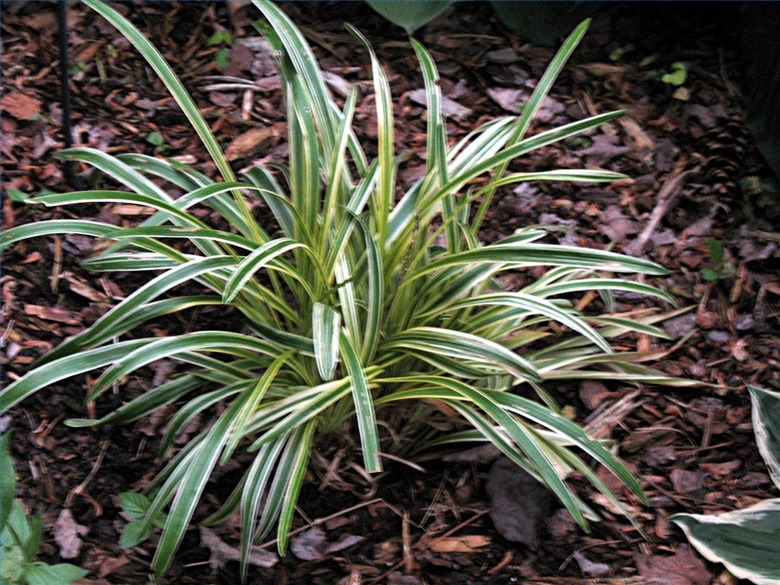Low-Maintenance Landscaping Ideas For The Backyard
We may receive a commission on purchases made from links.
Low-maintenance landscaping ideas for the backyard keep your entertaining space beautiful and easy to care for, saving you tiring work. All landscaping requires some maintenance to keep the property looking beautiful and groomed. However, low-maintenance plants and a simple landscape design can limit the amount of work needed to keep the backyard looking nice. Smaller gardens, hardscape features and mulch can help limit the amount of weeding and garden care required by the homeowner.
Simple Design for Low-Maintenance Landscaping
Simple Design for Low-Maintenance Landscaping
Designing low-maintenance landscaping begins with allowing plenty of room for plants to grow. Create gardens with open spaces to encourage healthy growth and air circulation around each plant. You'll need to divide expanding perennials every three to four years.
Some shrubs and plants simply require very little care to be beautiful additions to your gardens. Hostas (Hosta spp., USDA zones 3-9) offer many variations of leaves as well as white, lavender, or purple flowers in mid to late summer. Just plant any one of many types of ornamental grass and watch it grow with next to no maintenance. Tall pampas grass (Cortaderia selloana, zones 7-10) planted in clumps offers a stunning, simple addition to any landscape.
Gardens should be designed for ease of mowing nearby grass. Add borders or edging to keep mulch in the gardens and provide a clean line between garden and grass. If you dislike the clipping involved along edging, use a shovel to create a trench-like, angled edge to your gardens. Add mulch to your gardens to retain moisture and limit the growth of weeds and your time spent weeding.
Choose Low-Maintenance Plants
Choose Low-Maintenance Plants
Take a close look at your neighbors' yards to see which plant species work best in your climate. Native plants and those suited to your USDA hardiness zone require less care, including less watering and pest control since they've adapted to your environment. Take available sunlight into consideration before purchasing plants to create low-maintenance landscaping.
Shrubs can be beautiful additions to the landscape and offer vibrant green leaves or flowers. Most shrubs such as azalea (Rhododendron spp.), rhododendron (Rhododendron spp.) and crepe myrtle (Lagerstroemia spp.) require very little maintenance. Evergreens offer the option of even less maintenance while providing interest year-round. Dwarf variety shrubs and trees grow slower and, as a result, require considerably less pruning.
Bulb plants such as calla lilies (Zantedeschia spp.) and irises (Iris spp.) return every year in their perennial range with stunning blooms in a variety of colors. Consider adding flowering perennials that bloom at different times throughout the growing season. Good choices include aster (Aster spp.), phlox (Phlox spp.) and drought-resistant yarrow (Achillea spp.).
Annuals require frequent watering and fertilizing as well as pruning to keep the plants blooming. Choose a few varieties and use these flowering plants sparingly throughout your landscape to limit care time.
Use Xeriscaping Practices
Use Xeriscaping Practices
Xeriscape gardening refers to the creation of gardens that offer both low maintenance and water conservation. These gardens contain plants such as ornamental grasses, ground covers and sun-tolerant flowering perennials. Certain types of junipers (Juniperus spp.), pines (Pinus spp.) and spruces (Picea spp.) offer vibrant green additions to your simple landscape design while still adhering to the concept of xeriscaping.
Remember that all plants require moderate watering during the transplanting adjustment period. Follow the plant label or garden center's recommendations until the plant is established. Always apply mulch to your xeriscape garden to retain moisture and discourage weed growth. Xeriscape plants almost always reflect the varieties of plants native to your local area. Consult with your local garden center for more information about local plants to create a low-maintenance xeriscape for your backyard.
